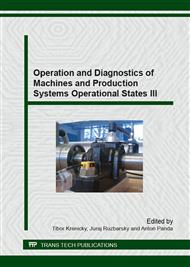[1]
J. Sýkora, Material data for computer simulation of the forming process in terms of the material database, in: Proc. of Conference The requirements of the automotive industry for metal stampings, Škoda Auto, Mladá Boleslav, (2000).
Google Scholar
[2]
F. Blaščik, K. Polak, Theory of forming, Alfa, Bratislava, (1985).
Google Scholar
[3]
E. Mielnik, Metalworking science and engineering, McGraw-Hill Inc., New York, 1991, pp.282-286.
Google Scholar
[4]
Z. Buchar, V. Mikeš, A new approuch to sheet metal formability expression, in: Proc. of Int. Conf. IDDRG working groups meeting, Colmar, France, (1995).
Google Scholar
[5]
A. Labellarte, L. Rizzo, C. Sebastiani, High Strain Rate Forming Limit Diagram for Steel and Titanium with an Optimised Methodology, in: IDDRG working Group 2, USA, (2000).
Google Scholar
[6]
M. Badida, M. Gombár, J. Kmec, L. Sobotová, A. Vagaská, P. Michal, Study the effect of the chemical composition of the electrolyte layer formed on the micro-hardness anodic oxidation of aluminium (Štúdium vplyvu chemického zloženia elektrolytu na mikrotvrdosť vrstvy vytvorenej anodickou oxidáciou hliníka), Chemické listy 107 (2013).
Google Scholar
[7]
E. Fechová, J. Kmec, Diagnostics of Strain Hardening Exponent and Material Constant of Steel Sheets, Applied Mechanics and Materials 616 (2014) 252-259.
DOI: 10.4028/www.scientific.net/amm.616.252
Google Scholar
[8]
T. Krenický, Multi-parametric monitoring using virtual instruments, Metalurgija 53/3 (2014) 426.
Google Scholar
[9]
P. Solfronok, Influence of surface morphology on the development of metal deformation in drawing stampings sheet metal, Dissertation thesis, Liberec, TU FS, (2003).
Google Scholar


